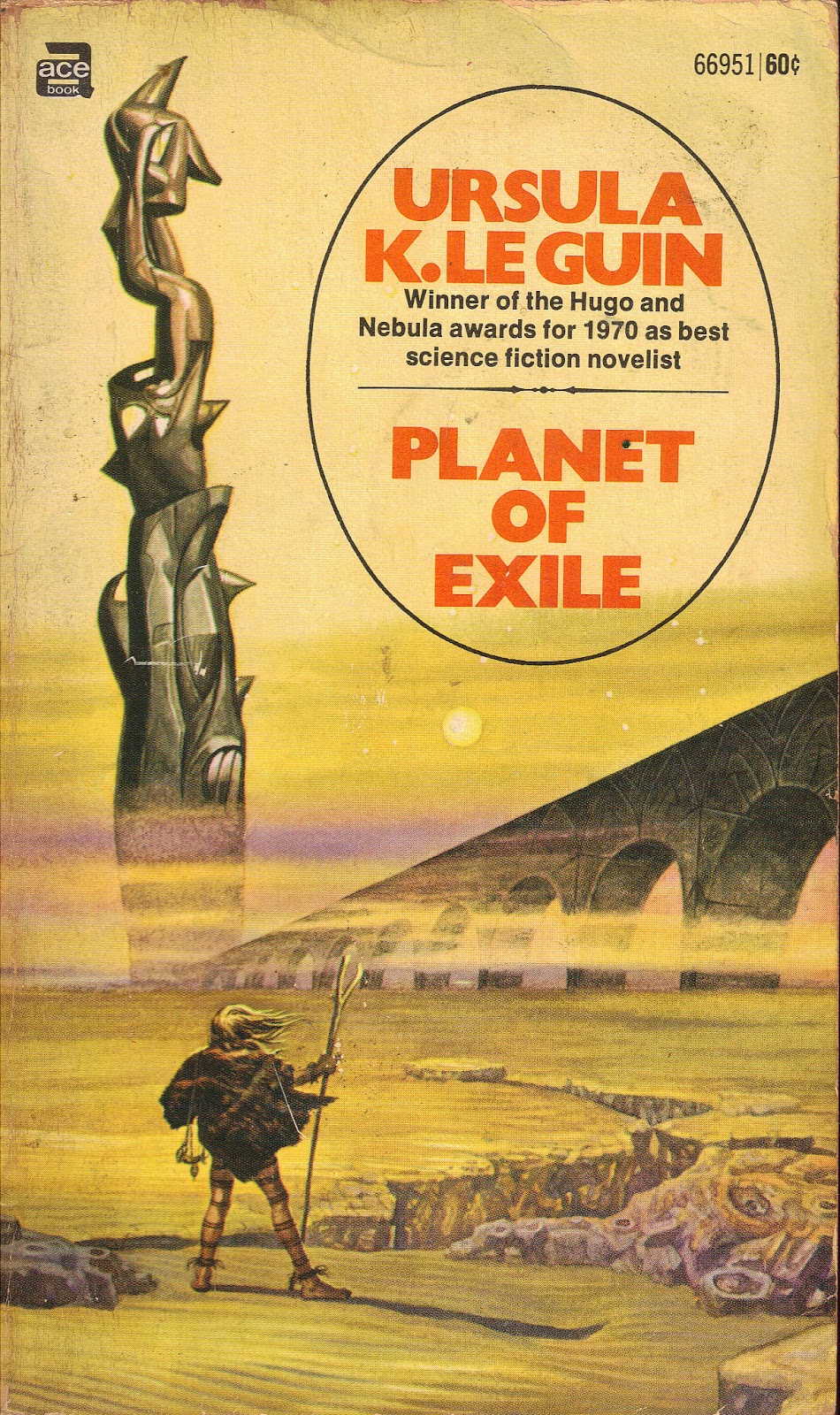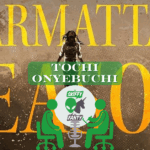Today on Mining the Genre Asteroid, I take you to a Planet of Exile. Last time on Mining the Genre Asteroid, I discussed Ursula K LeGuin’s first novel, Rocannon’s World. This time out, I stay in LeGuin’s Hainish universe and take a look at another early novel of hers set in that verse, Planet of Exile (1966). I look at how this novel extends and builds upon Rocannon’s World, and how it lays foundations for more of the Hainish universe. It is also a rather nifty “under siege novel” that keeps the strengths of character and worldbuilding we saw in Rocannon’s World.

Planet of Exile is the story of Rolery and Jacob on the planet of Werel. Rolery is a young humanoid native of the planet, a member of the Tovarian tribe. For the most part, she and her people live a bronze age existence. Winter is coming, and so her people are preparing to settle in for the long winter, laying in supplies and giving up their nomadic existence for a sedentary but temporary city-based one.
Nearby, there is a permanent city of aliens with technology and psionic powers. These aliens know things about events far away. Rolery’s tribe trades and deals with these aliens, but they always do so with fear and reserve. Sometimes these aliens even take lovers among the Werelians. Jacob, our other main character, is one of these aliens. When Jacob and Rolery meet during a particularly rough winter that threatens both to the Tovarians and their alien neighbors, their relationship becomes a seed of hope for survival for both peoples. Separate, neither is prepared for the extraordinary dangers of this winter. Together, centering on the Jacob and Ralery’s relationship, they can be greater than the individuals they are and more than their peoples.
In Planet of Exile, LeGuin throws a curve ball for our expectations by taking a very modern sort of approach to what might be a straightforward fantasy story. The aliens on the world, including Jacob, are not elves of any sort, but humans. They are humans who are refugees, exiled on this alien planet after having given up most of their technology long ago. They are almost as vulnerable to the threats and dangers of the planet as their local neighbors.
The plot is intimately tied to the worldbuilding and is a nicely emergent property of the world Le Guin has created. Like Westeros, Werel has seasons lasting decades long. The Werelian moon fully orbits the planet in more than an Earth year, and 60 of those 400 day months mark a trip around the sun. The eccentricity and axial tilt of the planet are such that the seasons are substantially potent — for good and for bad. So when winter comes along, it is a time for hunkering down and for dealing with long cold winters where little, if anything, grows. The Tevarians, a much more pastoral and open air sort of people in the other seasons, set to building “winter cities” to hunker down as the cold cruel season approaches.
In the midst of these preparations, the humans warn the Tevarians about something to dread. The migratory Gaal, a northern people who head toward warmer lands when winter comes, are not coming in the scattered tribes and small groups of previous winters. This season, however, is different. The Gaal have unified under a single leader, and in migrating south, they are taking and sacking every winter city in their path. Small bands of Gaal heading toward the south are not usually seen as a problem because they can’t take the walled winter cities on their own. Now, however, they have the numbers and power to raze everyone in their path, which they intend to do. The Tevarians and Humans both are in their sights. Add in the unique hazards of winter — cold, snow, predatory creatures, lack of supplies, and more — and the protagonists face an existential threat to their existence.
Although Le Guin wasn’t thinking in series terms by this second book, many concepts and ideas of the Hainish verse introduced here later prove to be building blocks for future novels. Here, Le Guin really works out some of the details of her Hainish verse, even as the action is restricted to a small scale story. Where Rocannon’s World took us across an entire world, Planet of Exile is a local story upon which giant regional threats are manifested. The focus, as such, is on the protagonists of both species and on dealing with the large scale Gaal threat and the havoc that threat causes to the local area. This massive migration of the Gaal is not only dangerous on its own, but it also stretches the resources Jacob and Valery have in dealing with the more “ordinary” winter threats of cold, privation, and dangerous wildlife.
As opposed to the wide variety of species on Rocannon’s World, here, there are just the marooned humans and human-like natives. Le Guin was starting to work out her Hainish verse here,where the Hain are the ultimate ancestors to a number of human like species (and humans themselves). The various species of humanity originating with the Hain is briefly mentioned, but the novel firmly establishes for the first time in the series the origin of humanity — and other Hominids — as speciating from the Hain. The Werelians are near-homo sapiens Hominids but not homo sapiens strictly speaking. Interbreeding is thought to be impossible, although relationships between the two are rare and unusual and often tinged with tragedy.
With that in mind, the central relationship works the paces of such a doomed, tragic relationship. There is a real feel of “human falls in love with an elf” sort of feel in Valery’s relationship with Jacob, the Earth human from the city of Landin. Of course, it’s the human who is the elf in this scenario. While Jacob is our “man of action” throughout the novel — and is important to the ultimate defense of humans and the local Werelians against the threat of the migrants and the hazards of winter — Rolery is the emotional heart of the novel. It is her action, her decisions, and her impetus that and drives the action by her decisions.
One thing I would have liked better, though, would be treating the invaders as less faceless people. They come across as a “faceless horde” of invaders without any characters, viewpoint or otherwise, to humanize them. They are just like the snowghouls and the cold of winter as being a primal force of threat, which dehumanizes them to a somewhat uncomfortable extent. While this is really Rolery’s story — and the story of the civilized Werelians and the human exiles — having the antagonists here being undifferentiated feels like a step back from the prior novel. We know in a general sense why they have come south, and we see their tactics and actions against the locals, but we don’t get any additional sense of who and what they are.
So what is the value of reading Planet of Exile today? Does it hold up? Is it worth your time? The theme of exiles and refugees trying to adapt to a new world and integrate with its inhabitants is a very timely theme that gives the book resonance here in 2019. How do we deal with people so different than us, especially when there are greater and more overarching problems such as climate change looming to overwhelm us all? I don’t think that Le Guin’s story of Werelian seasons and the threat of the Gaal was explicitly written as a motif on climate change, unlike George R R Martin’s novels, which are more clearly about this subject. However, Planet of Exile can certainly be reinterpreted in those terms: the winter is coming, and everyone on Werel knows it, but the Tovarians are not convinced the winter will be as dangerous as suggested while believing that decisive action might be risky and unwarranted. Best to do what you’ve always done. Don’t trust the outsiders. Winter will be as it always was. No cause for alarm. The cautionary tale of Planet of Exile in not taking necessary action and paying the price for it is more resonant than ever.
And it’s an entertaining novel. Base Under Siege novels are built in pressure cookers for plot and character, and cities make great opportunities for a cast of characters to have to deal with the threat outside. Sam Hawke’s recent City of Lies leverages this to excellent effect. As her second novel, Planet of Exile is, aside from the issue of the facelessness of the opposition, extremely solid. It is also an excellent addition to the Hainish universe, not only because of the worldbuilding for the entire universe that she does here, but also because Le Guin provides a solid and entertaining “base under siege” story as the fulcrum of the novel.
Mining the Genre Asteroid is Paul Weimer’s column where he takes a look back at an older genre work, frequently of a writer from a marginalized community or with such a protagonist, and brings a fresh and modern perspective to the work.








One Response